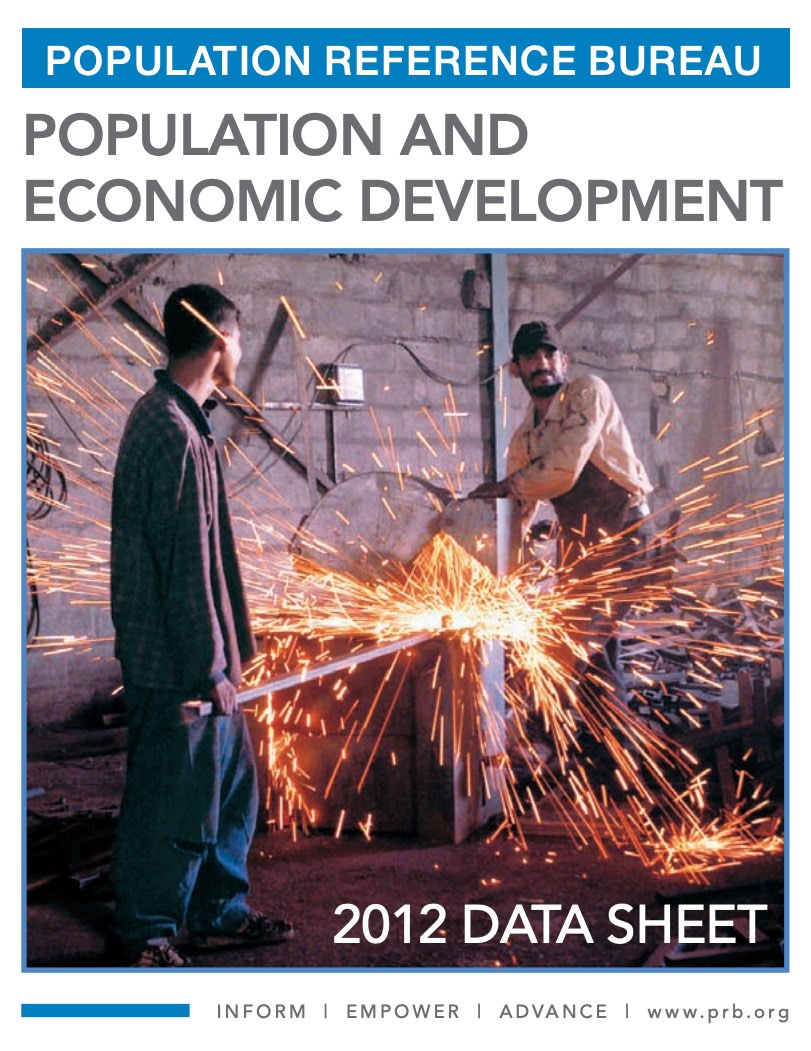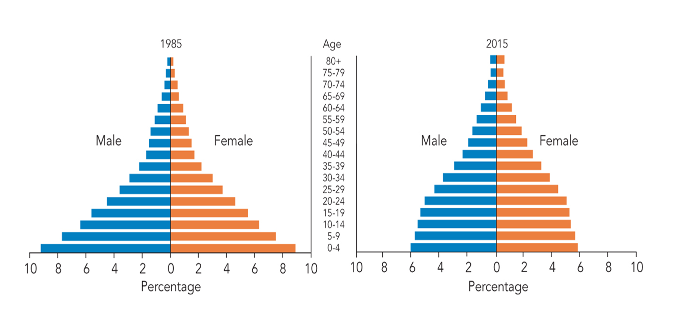
Population and Economic Development 2012 Data Sheet
(March 2012) PRB’s Population and Economic Development 2012 Data Sheet, with 21 indicators from 140 low- and middle-income countries, presents a complex picture of countries still struggling with economic challenges and inequalities, while others are making significant headway. Though there are fewer low-income countries in 2012 than there were in 2000, those that have graduated into middle-income status continue to battle persistent poverty and sharp variations in inequalities. A number of countries, regardless of income level, are making strides to meet these challenges.
The success of the “Asian Tigers,” such as South Korea and Taiwan, has long been held as an example of social and economic development in the developing world. Other countries in the region, including Thailand and Malaysia, also made significant gains in a relatively short period of time. But the Philippines, with one of the largest populations in Southeast Asia, is struggling with uneven economic performance, steady population growth, and high levels of inequality in education and health outcomes across regions and income groups. In 2008, only 26 percent of women in the poorest wealth quintile were using a modern method of family planning, compared to 50 percent in Indonesia. Efforts are underway in the Philippines to foster more inclusive growth that benefits the poor, including programs to improve health service delivery, a critical component in poverty reduction.1
Africa has the largest share of low-income countries, but recent survey data from Rwanda are encouraging. According to the 2010/2011 Household Living Conditions Survey, which provides an international benchmark for assessing the prevalence of poverty, Rwanda has experienced a 12 percent reduction in poverty since 2006. That equals 200,000 households, or about 1 million people, elevated above the poverty line. During the same period, maternal and infant mortality rates declined, secondary school enrollments doubled, and the total fertility rate dropped from 6.1 to 4.6 children per woman—fueled by the rapid uptake of family planning.2 Political commitment and an active citizenry are working together to help forge a healthier and more-educated population.
Brazil has emerged as one of the world’s strongest economies and is also playing an important role in South-South partnerships in sub-Saharan Africa. These collaborations are providing knowledge exchange, trade, and investments in areas such as tropical agriculture, tropical medicine, and vocational training. In less than a decade, Brazil lifted 20 million of its citizens out of poverty into a middle class with access to formal jobs, health care, and education. Secondary school enrollment rates are among the highest in South America—85 percent for girls and 78 for boys. The country is now one of the largest exporters of agricultural and food products, and has also made advances in developing generic pharmaceuticals for combating HIV/AIDS and other tropical diseases.3 Brazil’s successes on the economic and social fronts, as well as its development experience, offer valuable lessons for African countries.
References
- World Bank, Philippines: Fostering More Inclusive Growth (Washington, DC: World Bank, 2010).
- Government of Rwanda, Ministry of Finance and Economic Planning, www.minecofin.gov.rw.
- World Bank, Bridging the Atlantic: Brazil and Sub-Saharan Africa, South-South Partnering for Growth (Washington, DC: World Bank, 2012).
Infographic:
How Does Wealth Affect Health in Sub-Saharan Africa?
Click on image for a full-size version.

 ">
">
 ">
">
